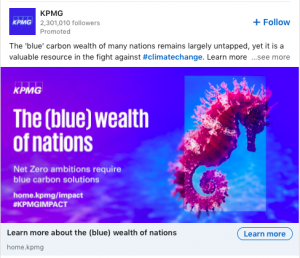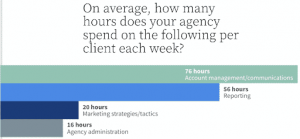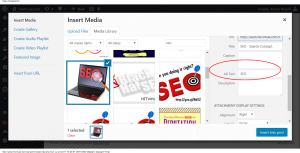Do you ever get an email from a prospect who asks question after question, only for them to finally decide they’re not interested?
In an ideal world, it would be easy to identify straight off the bat who are the best prospects to go after. Of course, in reality, things aren’t so simple. A seemingly hot prospect might come to you full of questions, only to never be heard from again.
Identifying Your Core Customers
When I get an email from someone needing help, there are often obvious signs that indicate straight away whether the person is a serious prospect, or merely looking around.
Knowing what to do will help you save time and figure out how to respond to such requests. These are the three things you can do to identify your core customers so that you can spend time on the most serious and likely prospects.
1. Identify red flags at the start
Sometimes it’s difficult to identify right away whether someone will become a customer (and a good one at that), but there are some tell-tale signs that can serve as strong indicators.
If someone is difficult to deal with during initial discussions, things won’t get better after you’ve signed them on — if they decide to go with you. Prospects who take up a lot of your time asking for advice with no signs of moving forward are one example.
Constantly giving people more feedback will not encourage them to become customers. Since they’re already getting all the help they need, why should they? And if they do, expect to spend large chunks of time catering to their demands.
Instead, try limiting the exchange to a few emails before you suggest progressing to something bigger, such as a brief phone call or a small project. Doing so forces the other person to think more seriously about whether to work together.
Another red flag is when someone contacts you out of the blue to give advice. Isn’t it funny how people love to give advice, regardless of whether or not they’re qualified to do so? If you’ve been running a business, you’ve probably received advice from strangers on how to run your business, even if they don’t run one themselves!
This brings us to the question of when to take feedback seriously. It turns out that the answer depends on whether the person is already a customer or not.
In Trakio’s Beta program, the free users gave suggestions that were very different from its paid users. Paid users provided suggestions that were more mundane, but increased the value of the product. Free users, on the other hand, gave ideas that were “nice to have”, but not essential to product usage.
So while it’s (sometimes) nice to get feedback from people, it’s important to identify where the feedback is coming from, and whether its implementation increases the value of your products and business overall.
2. Understand the psychology behind buyer and non-buyer behavior
If you’ve ever felt like someone has wasted a chunk of your time without providing anything in return, don’t despair. We’ve all been there.
The first step to preventing this is to understand that it takes two people to cooperate: you and the other individual. When I interact with someone who reaches out to me, I remind myself to keep aware of how much time I’m providing to the person.
Giving value upfront can give the prospect an idea of how you can benefit them, but be careful not to spend too much time upfront. If you spend a lot of energy helping the person over and over, the prospect will be conditioned to expect help from you, making them feel less gratitude over time and increasing your level of resentment towards them.
The increased use of the internet for service and product transactions is likely a major reason why people feel more comfortable taking without the need to reciprocate. In a study, volunteers were more likely to cooperate with one another if they were held publicly accountable and could face punishment for acting selfishly.
Since the internet is largely anonymous, for the most part people aren’t publicly accountable for their actions. The threat of punishment is low since users aren’t faced with social rejection or any other form of punishment when they don’t conform to social norms.
When speaking with prospects, the question “how much does this cost?” will invariably come up. Before you get to the price point though, you need to demonstrate how you can provide value first. This helps the prospect understand how you can help them reach their goals and make their life easier, which will essentially make the price more justifiable.
Despite your best efforts, some people will solely focus on the cost and not on the value you provide. If this is the case, accept that not everyone is going to be a customer and that’s okay.
3. Determine the value of your customers
According to the Pareto principle, about 80% of sales revenue comes from 20% of customers. We can use this principle in a few ways to determine the value of our customers.
I find this to be a useful exercise in order to get a big picture idea of how I’m spending my time and what areas I can focus on to maximize efficiency. In a nutshell, you look at your current customers and evaluate the amount of support (i.e. time) they need and the revenue they produce.
I find that using a quadrant can help determine where various customers are:

According to the illustration, the most valuable customers are in the top left quadrant, which are those with high revenue and low support.
Interestingly, you might notice in your own experiences that as you charge higher prices or rates, customers tend to take up less of your time and make fewer demands.
A good thing to do is to evaluate which of your customers fit into the top left quadrant and then learn more about them. This includes finding common demographic factors such as their age, occupation and geographical location. Look at where these groups congregate or go to for information — this can be as direct as providing them with survey questions.
Once you’ve learned more about how to reach your ideal customer, you can go after them in a focused and deliberate manner.
Finding and targeting your ideal customer is a win-win for both you and the customer. You get to work with people who appreciate your time and help, while giving them the opportunity to work with someone who can over-deliver and dedicate energy to helping them.
Start Today
If you don’t know your ideal customer yet, that’s okay. It’s a process that you can begin today by determining what your customer needs and the revenue they provide. You don’t need to overhaul your customer base overnight, but doing an initial evaluation will go a long way in finding out how to improve your products and services.
If you want more ideas on how to make the best use of your time when building a business, check out my productivity guide (available here).
Business & Finance Articles on Business 2 Community(77)
Report Post





